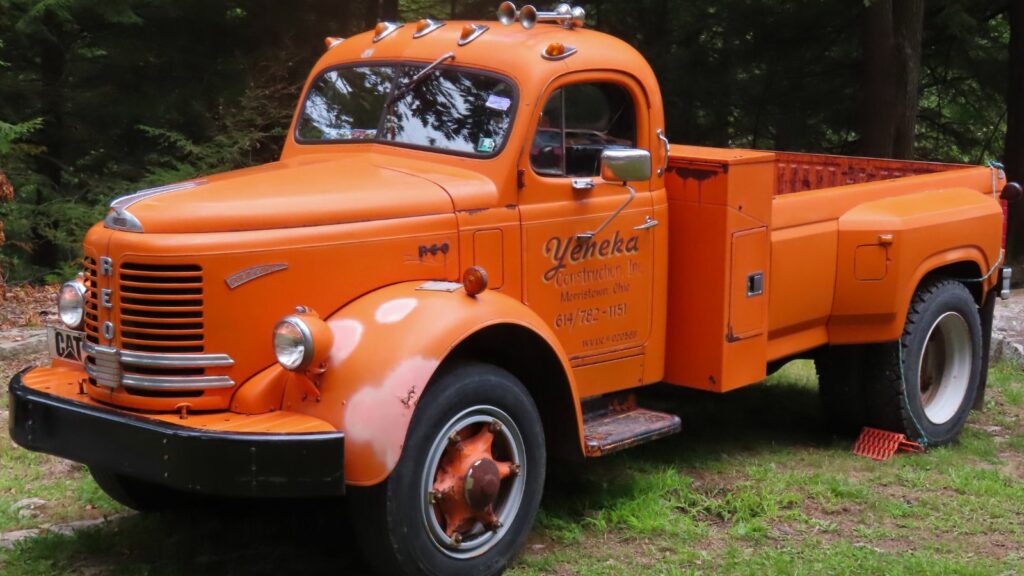The 1950s marked a golden age for American trucking. Highways stretched further, diesel power replaced gas engines, and manufacturers began shaping machines that were not only tough but beautiful to look at. This was the decade when form met function in spectacular fashion. Big rigs took on character, with sweeping fenders, towering grilles, and chrome accents that made them icons of the open road. These were the trucks that defined postwar America, built with pride and designed to turn heads as they conquered miles of asphalt. Here are thirteen of the best looking semi trucks from that unforgettable era.
Peterbilt 351

Introduced in 1954, the Peterbilt 351 quickly became a legend. It represented a shift toward long nose designs that emphasized power and elegance. The polished aluminum cab, vertical grille bars, and tall exhaust stacks gave the 351 an unmistakable presence on the highway. Drivers loved its solid build quality and the choice of dependable Cummins or Caterpillar diesel engines. The 351 was light for its size thanks to its aluminum construction, which also gave it a clean, modern look compared to its steel-bodied competitors. Even today, restored 351s remain prized among collectors who appreciate both their engineering and their unmistakable visual appeal.
Kenworth Bullnose

The early 1950s Kenworth Bullnose was as distinctive as its name suggests. With its rounded front end and compact cab, it was designed to fit within length laws of the time while still providing serious hauling power. The unique split windshield and bright chrome detailing made it instantly recognizable. Though smaller than the later long nose Kenworths, the Bullnose had personality in spades. It was particularly popular in urban areas and regional delivery routes where tight spaces demanded agility. Its bold proportions and curved cab design have earned it cult status among vintage truck enthusiasts who see it as a charming bridge between old and modern trucking design.
Mack B61

Few trucks from the 1950s command respect like the Mack B61. Launched in 1953, it combined raw power with rugged style. Its wide fenders, upright grille, and the iconic bulldog hood ornament created a look that was pure authority. The B61’s Thermodyne diesel engine was renowned for reliability, while its muscular design became a symbol of America’s growing freight industry. Many owner operators favored the B61 not only for its capability but for its presence. Whether hauling steel, lumber, or fuel, the B61 looked like it was built from solid muscle. Even sixty years later, it remains one of the most recognizable and beloved trucks ever built.
Diamond T 921

The Diamond T 921 was known as the Cadillac of Trucks, and for good reason. It blended craftsmanship, performance, and aesthetics better than almost any competitor. The sweeping hood, intricate grille design, and elegant curves gave the 921 an art deco character that few heavy trucks have ever matched. Drivers appreciated its spacious, comfortable cab and smooth road manners. Diamond T built its reputation on refinement and strength, and the 921 was its masterpiece. Painted in two tone color schemes with stainless trim and polished bumpers, it looked as if it belonged in a showroom as much as on a worksite.
Freightliner WFC

Freightliner’s West Coast Cabover, known as the WFC, was one of the most forward thinking trucks of the 1950s. Built to meet strict California length restrictions, it moved the cab directly over the engine to save space without sacrificing capacity. The result was a truck that looked unlike anything else on the road. Its flat front, bright trim, and tall profile gave it a futuristic appearance that perfectly matched its innovative layout. The WFC became especially popular with regional haulers on the West Coast who needed maneuverability and efficiency. It helped solidify Freightliner’s reputation as a pioneer in truck engineering and design.
GMC 630 Series

The GMC 630 Series, produced from 1953 through 1959, offered a perfect blend of muscle and refinement. Its broad grille, rounded hood, and sculpted fenders gave it a proud, confident look. GMC fitted the 630 with powerful diesel engines that could handle long distance hauling while maintaining reliability. Many fleet operators chose the 630 for its balance of performance and style. Its polished details and brightwork gave it a sense of class that made it stand out in truck stops across America. Even when caked in dust from the open road, the 630 looked every bit the part of a working showpiece.
REO E Series
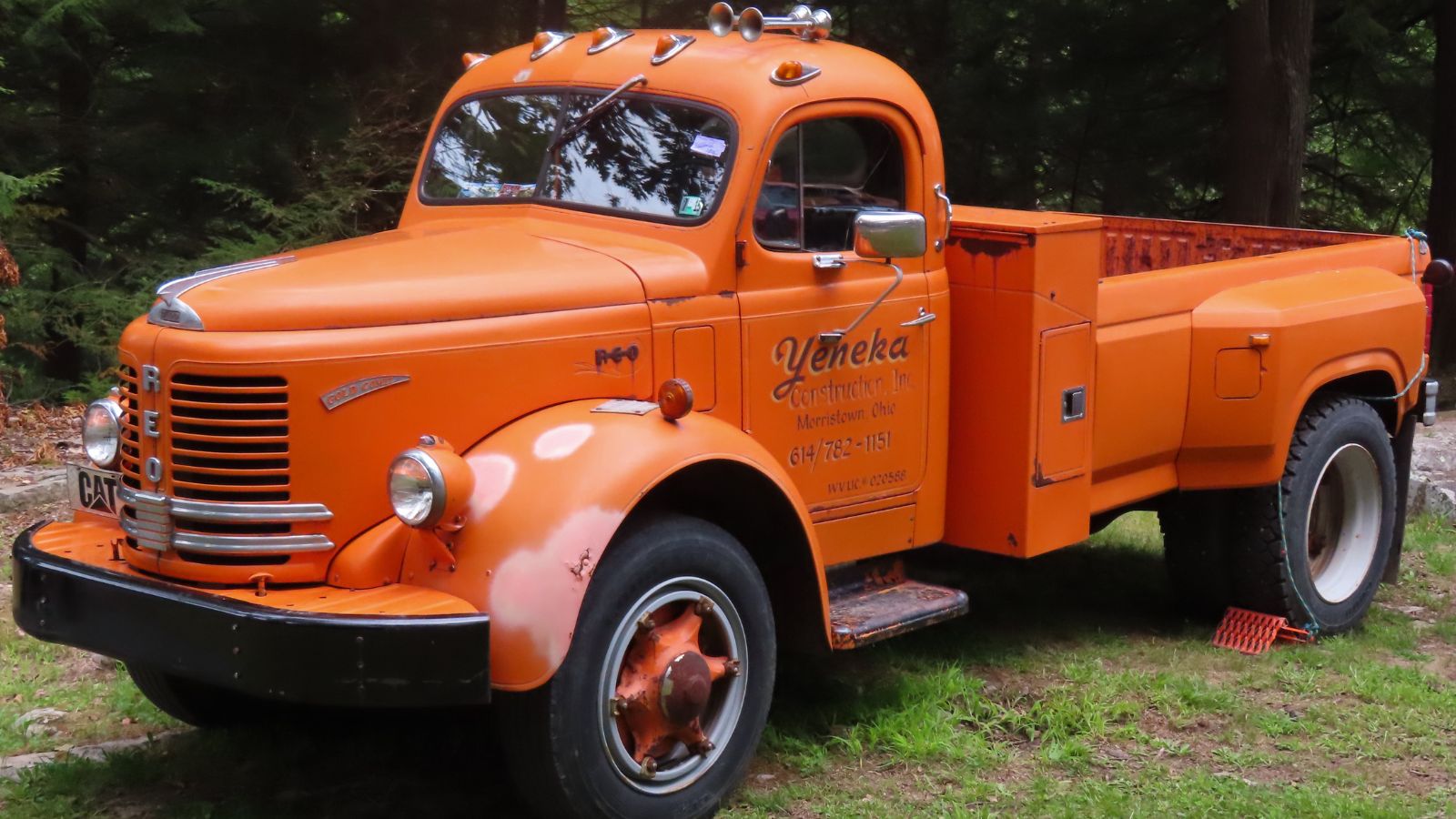
REO trucks may not have survived past the 1960s, but during the 1950s they produced some of the most visually distinctive trucks on American roads. The E Series combined strong performance with standout design. The curved windshield, prominent fenders, and smooth cab contours made it instantly recognizable. Many were painted in bold colors with stylish chrome accents that reflected the decade’s optimism. The REO E Series proved that practical trucks could still have flair and individuality. Today, surviving examples are rare but admired for their craftsmanship and the unmistakable design language of 1950s American industry.
Studebaker Transtar
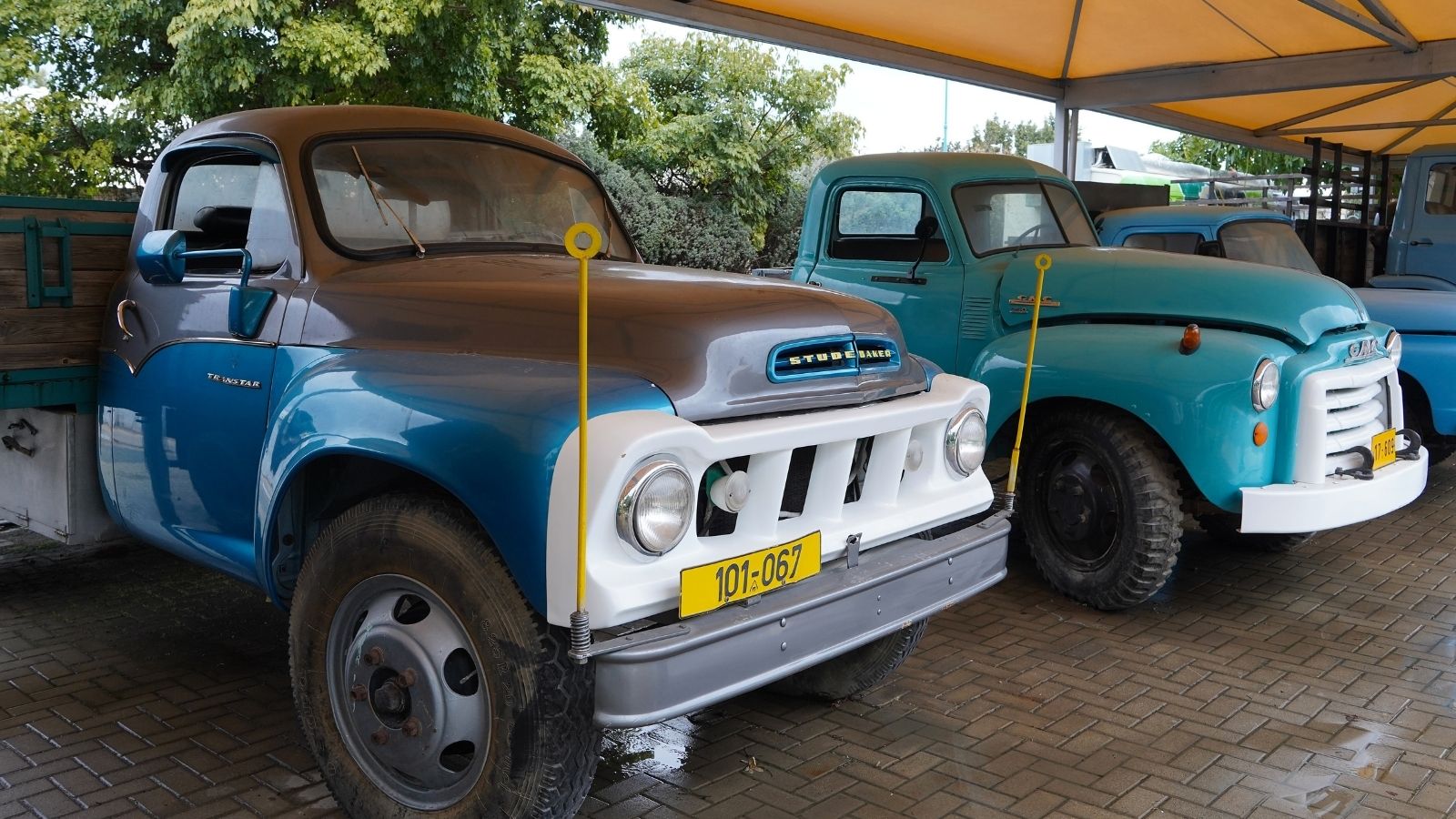
When Studebaker introduced the Transtar in 1956, it brought car inspired styling to the world of heavy trucks. The bold horizontal grille, rounded edges, and flowing lines gave the Transtar a sleek, almost futuristic appearance. Studebaker wanted to merge passenger car comfort with commercial capability, and the result was a design ahead of its time. Inside, the cab featured improved ergonomics and stylish detailing that appealed to independent operators who valued both looks and comfort. Though it never dominated the market, the Transtar remains a standout example of creative mid century truck design that still looks modern today.
Ford F7 Big Job
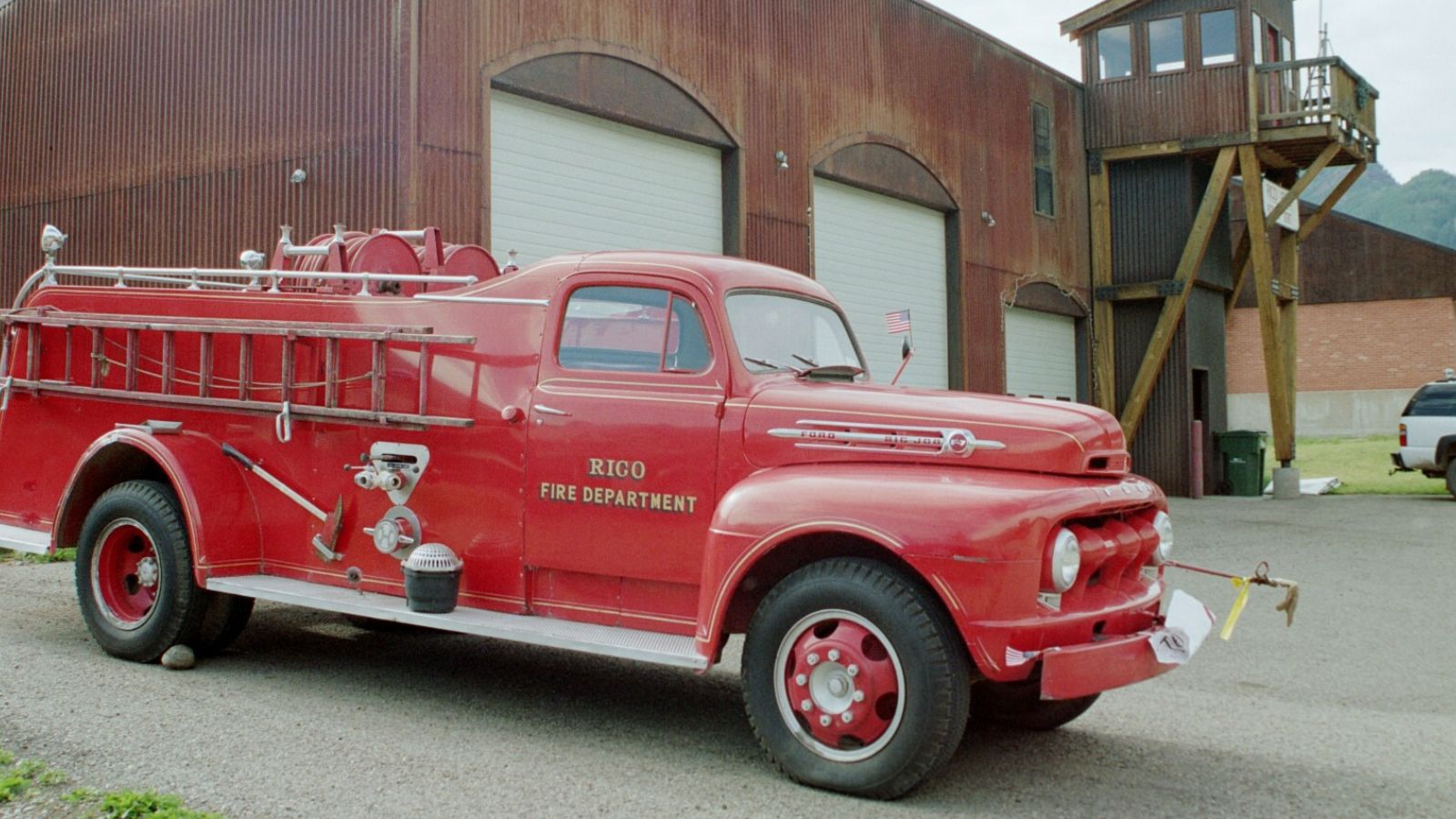
Part of Ford’s heavy duty lineup from 1953 onward, the F7 Big Job earned its name honestly. It featured an imposing front fascia, strong V8 engines, and a chassis built for serious work. Yet it also carried the signature design cues of 1950s Ford styling: chrome trim, rounded corners, and an upright grille that gave it unmistakable presence. These trucks were a common sight on job sites and in regional fleets, serving reliably in construction, agriculture, and freight. Even covered in dirt, the F7 looked dignified and capable. Restorers love them today for their combination of brawn and beauty.
Brockway 200 Series
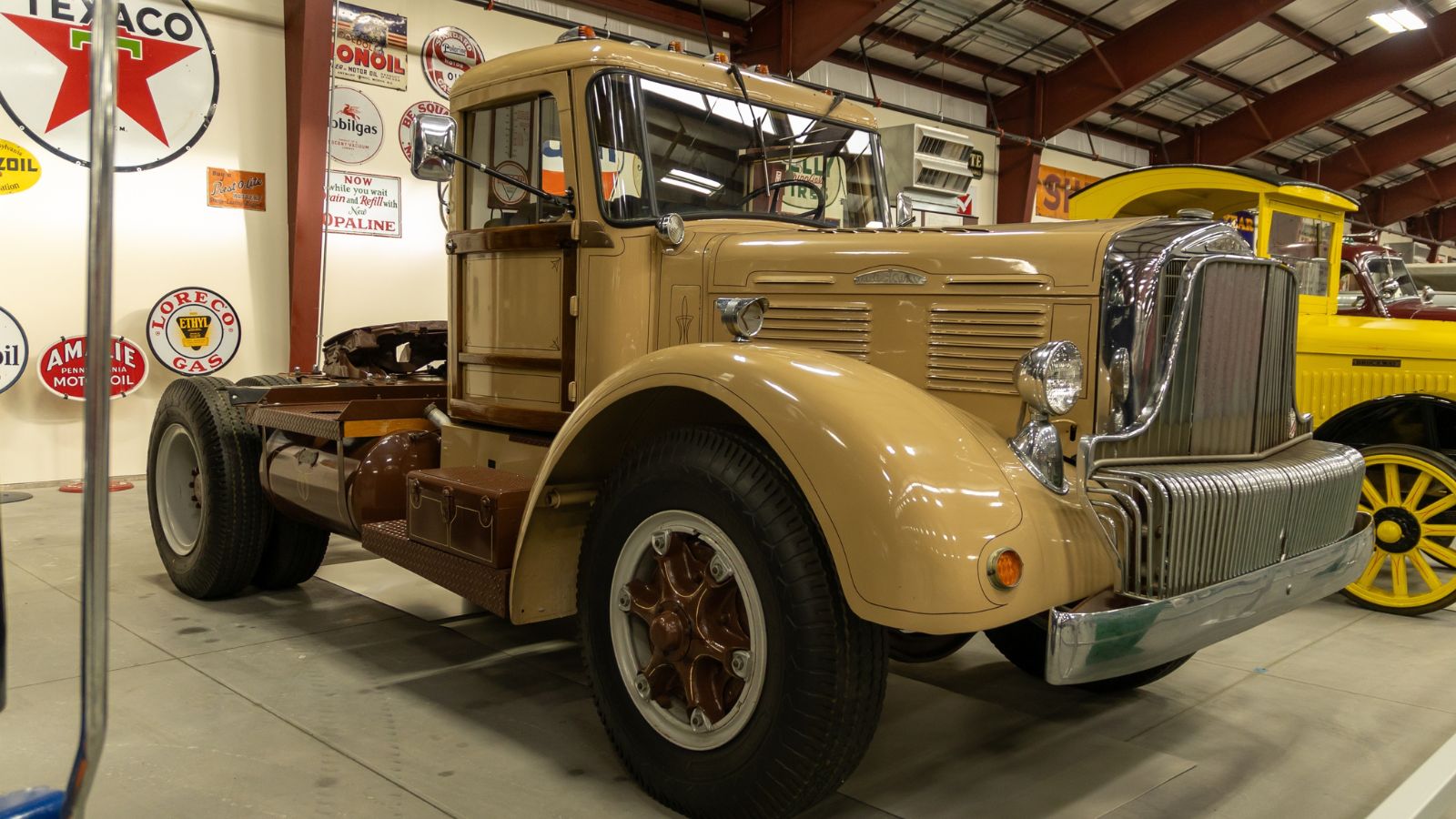
/Shutterstock.
The Brockway 200 Series, built in Cortland New York, closed out the decade with confidence and style. Its tall, square cab and bold chrome grille gave it a powerful appearance that matched its strong performance. Brockway trucks were known for reliability and toughness, but they also carried a distinctive sense of pride. Many independent haulers chose Brockways for their individuality, and the 200 Series became a favorite among owner operators. The truck’s straightforward design and solid engineering reflected an era when craftsmanship mattered as much as capability.
A Legacy That Still Turns Heads
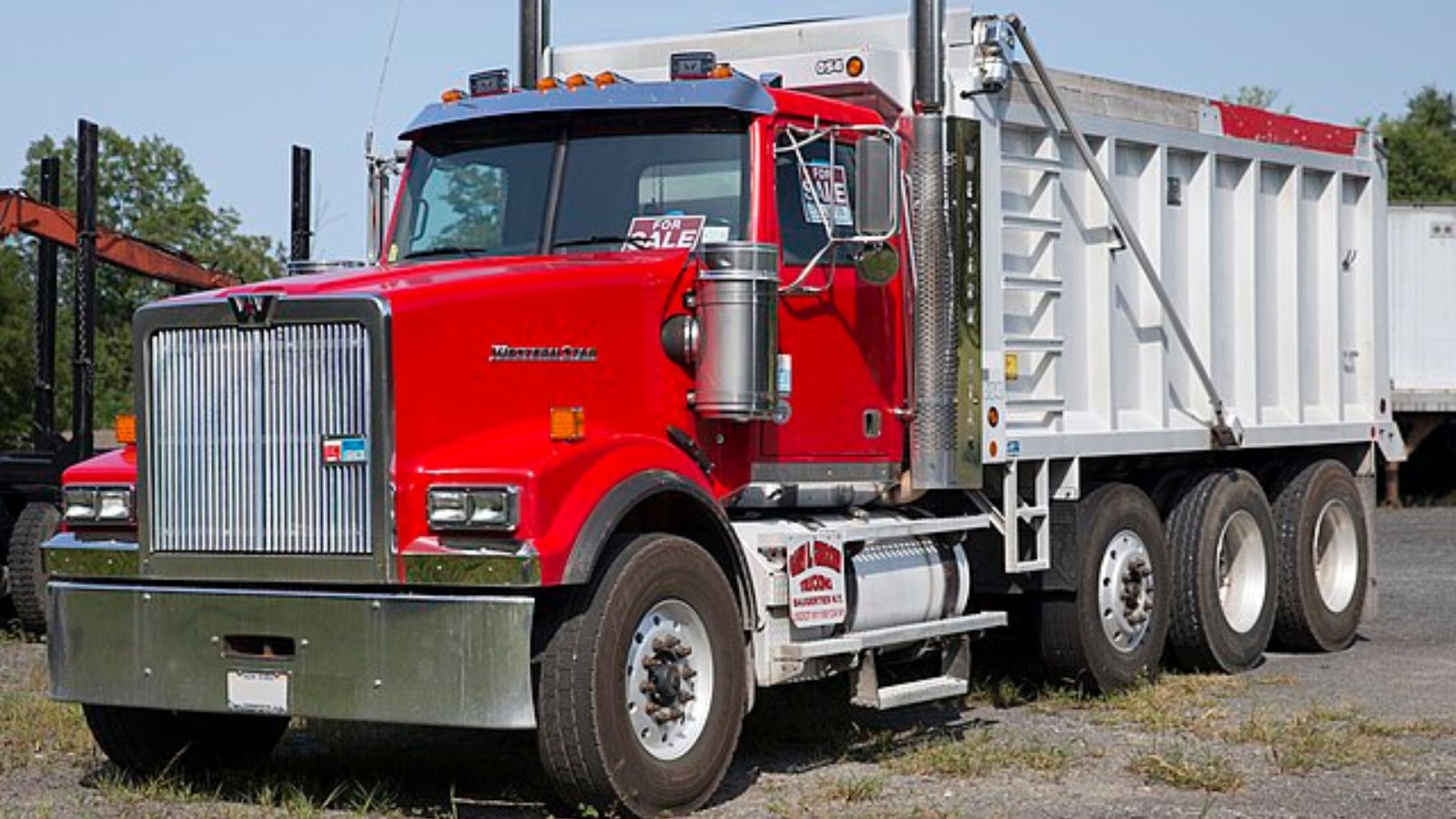
The semi trucks of the 1950s captured something rare: the perfect blend of engineering function and visual artistry. Every manufacturer brought its own interpretation of beauty to the road, from streamlined cabovers to elegant long nose haulers. Chrome trim, curved fenders, and polished aluminum spoke to a time when design still mattered deeply, even in the world of heavy machinery. Today, restored examples of these rigs draw crowds at vintage truck shows and remind us of an era when the open road was filled with machines that had both soul and style. The trucks of the 1950s were not just tools of commerce they were rolling sculptures that defined American ingenuity and pride.
25 Facts About Car Loans That Most Drivers Don’t Realize

Car loans are one of the most common ways people fund car purchases. Like any other kind of loan, car loans can have certain features that can be regarded as an advantage or a disadvantage to the borrower. Understanding all essential facts about car loans and how they work to ensure that you get the best deal for your financial situation is essential. Here are 25 shocking facts about car loans that most drivers don’t realize:
25 Facts About Car Loans That Most Drivers Don’t Realize
